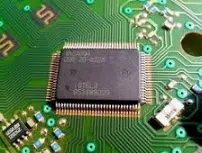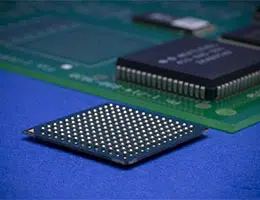 The electrical circuit formed by a large number of transistors that are integrated into a chip is called a microprocessor . Microprocessors allow the development of different functions in a computer (a computer ).
The electrical circuit formed by a large number of transistors that are integrated into a chip is called a microprocessor . Microprocessors allow the development of different functions in a computer (a computer ).
It is common that, due to its complexity and relevance, the microprocessor is mentioned as the brain of computers . This device is responsible for the execution of the software , from the different applications to the operating system.
The motherboard of a computer includes a particular socket that allows the connection of the microprocessor. It generally also has one or more fans and a heat sink that prevent overheating and, therefore, minimize the possibility of damage due to high temperatures derived from the operation of the microprocessor.
The origins of microprocessors date back to 1971 , when the Intel 4004 was introduced. Created for a calculator , this microprocessor had 2,300 transistors and a 4-bit architecture. The most modern microprocessors, on the other hand, have more than 700 million transistors and 64-bit architecture.
The advancement of technology is reflected in the exponential growth of processing capacity . As time went by, microprocessors began to execute more and more instructions - which are stored as binary numbers - in less time.
The microprocessor, in short, receives, calculates and analyzes data at different stages of execution. Its performance is linked to the number and duration of cycles (electromagnetic pulses) that are needed to carry out operations. Speed , meanwhile, is measured in frequencies that reveal millions ( MHz ) or billions ( GHz ) of cycles per second.
With respect to speed, it is necessary to point out that it should not be taken as a determining parameter of the performance of a microprocessor alone. There are others, such as its architecture, the instructions it can execute natively, the size of its transistors and its power performance, that must be included in the equation to be able to judge it more accurately.
This also relates to testing in “real-world” situations, that is, with programs and tasks that the vast majority of users perform on a daily basis. In general, microprocessors, both CPUs ( Central Processing Unit ) and GPUs ( Graphic Processing Unit ), undergo different evaluations using programs developed specifically to measure their different properties with extreme levels of demand; However, they are of little use if they do not reflect the use they will receive under normal conditions .
 With respect to the assembly of microprocessors, one of the most used technologies is called Flip chip , which also affects the packaging and assembly mode. First of all, we can say that it avoids the use of precision welders and expands the number of parts that can be assembled at the same time. With respect to packaging, the size of the integrated circuit can be considerably smaller.
With respect to the assembly of microprocessors, one of the most used technologies is called Flip chip , which also affects the packaging and assembly mode. First of all, we can say that it avoids the use of precision welders and expands the number of parts that can be assembled at the same time. With respect to packaging, the size of the integrated circuit can be considerably smaller.
Let's look at the stages of the process below:
* The contacts of the microprocessor connections are located on the top for later mounting on the board or on another chip. When two or more chips are placed in layers , either vertically or horizontally to form one, it is called a three-dimensional chip ;
* the outer pads are metallic;
* solder paste balls are placed on all contacts that have been metallized;
* the chip must be oriented so that the contacts and paste are located on the underside;
* the pads of the microprocessor must be aligned with those of the surface on which it will be placed, after which hot air is used to melt the solder material;
* The space between the microprocessor and the surface must be filled with an insulating adhesive.
